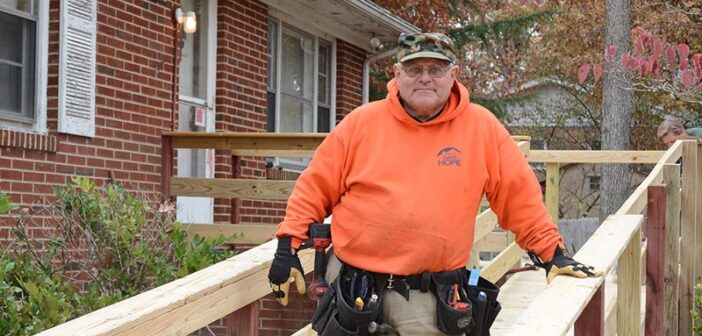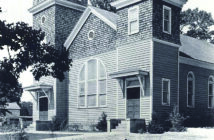Local handyman builds wheelchair ramps to improve neighbors’ lives
In the summer of 2005, Pete Adler attended a meeting of the Chester Rotary Club. A guest speaker from Project:HOMES attended to explain the group’s program and to recruit volunteers to build wheelchair ramps. The mission of Project:HOMES, as Adler explains it, is to “help keep people in their home as long as possible by providing accessibility through wheelchair ramps and other home improvements.” The Rotary Club in Chester “embraced the idea as an avenue of community support,” Adler said. In the beginning, the group volunteered “at the ElderHomes facility to prefabricate modules used by other groups to build ramps.” The first ramp Adler’s group built itself wasn’t for a house at all, but “on a trailer that we used as a float in the Chester Christmas Parade.”
The following spring, the group constructed its first ramp on a home in Colonial Heights. Since then, Adler has helped build 186 ramps in the area, mostly for local residents’ personal homes, but also for “the community centers at the Greenleigh and Shady Hill communities, the Chesterfield Food Bank, and most recently, the Faith Gospel Family Worship Center, a church in South Richmond.”
Adler emphasizes that what he does wouldn’t be achievable without his “team of dedicated volunteers [who]come when called.” Adler said he never worries about having enough helping hands; he’s “learned that God will provide what we need.” His volunteer pool includes friends at the Chester Rotary Club, at his church, and at other local churches, as well as people he knows from the Tri-Cities Workcamps, a group with which he volunteers as a handyman.
Typically, a team of volunteers can complete a ramp within a day. According to Adler, a project usually begins at 8:00 in the morning, and is finished by mid-afternoon. Some builds, though, are more challenging than others. “One of the earliest ramps we built was at a country home for a little boy with cerebral palsy,” Adler recalled. “We knew it was going to be a long ramp because of the way the ground sloped away from the house.” Upon completion, the ramp totaled 63 feet in length and included multiple landings and turns. “It reminded me of a queuing line at Disney [Park],” Adler said. When he returned to the home after construction to take photographs, the boy’s grandmother told him how much her grandson enjoyed “‘rides’ up and down the ramp.”
Adler and his volunteers provide joy, but also improve community members’ lives by increasing accessibility and mobility. “The most rewarding aspect of what we do is the immediate impact we can make on the quality of life for someone who has been struggling to get in and out of [his or her]house,” Adler said. “The gratefulness of the residents is all the fuel we need to keep moving forward to the next project.”
Adler is no stranger to home improvement projects. He was raised “in a home where we were always fixing things, working with Dad.” From his do-it-yourself upbringing, Adler learned to “enjoy the sense of accomplishment of solving problems.” This desire to problem-solve means that over the years, Adler has been able to help make the building process more efficient.
In addition to a more streamlined process, a dependable team makes all the difference to Adler. “Everyone has something to contribute,” he said. “Many hands make a burden light. And together we can make a significant positive impact on someone’s life.”






